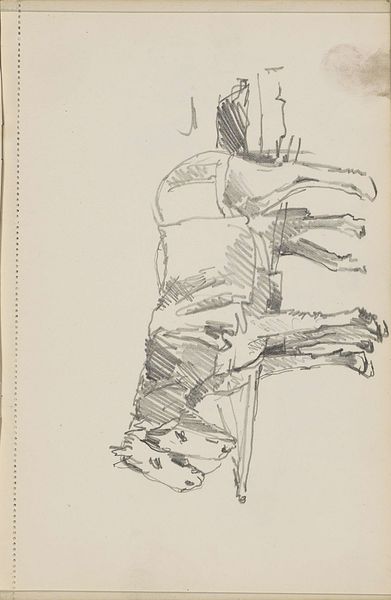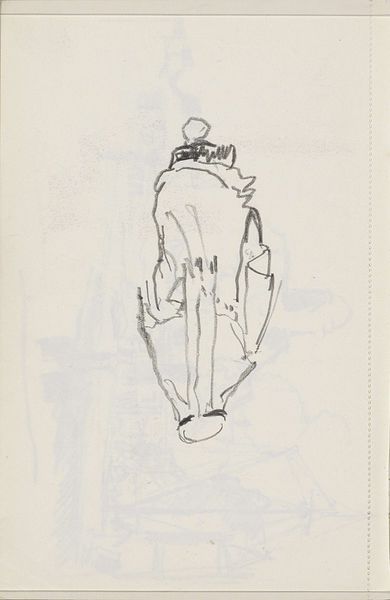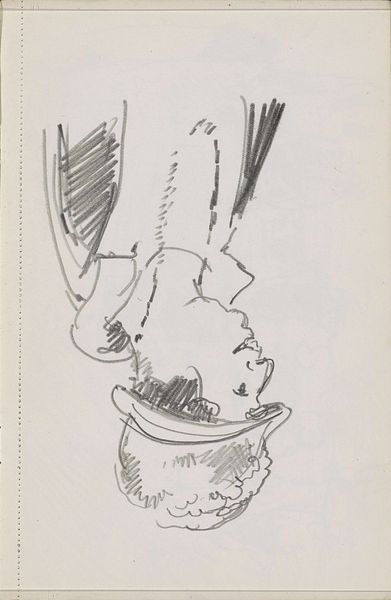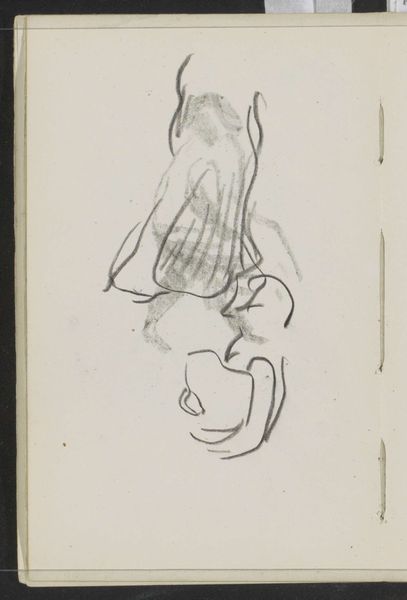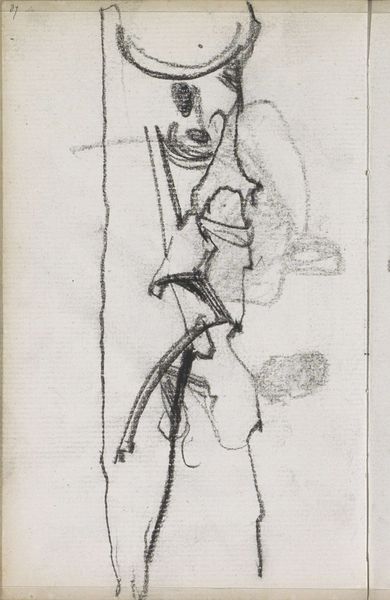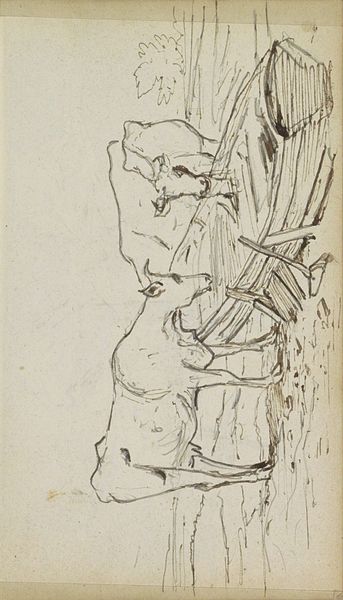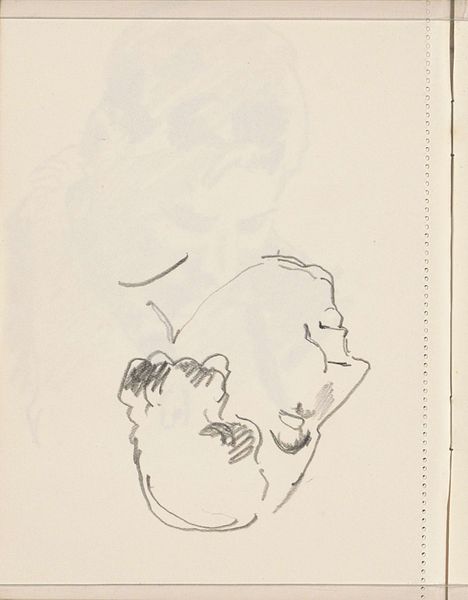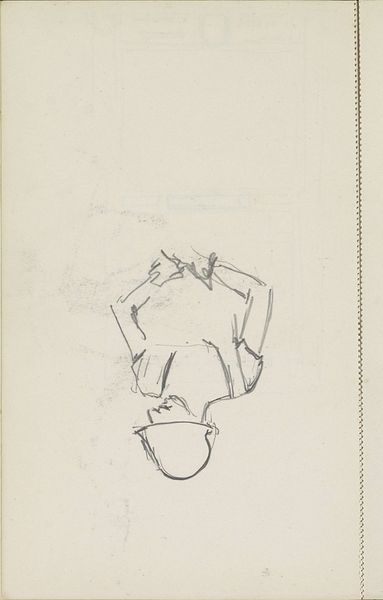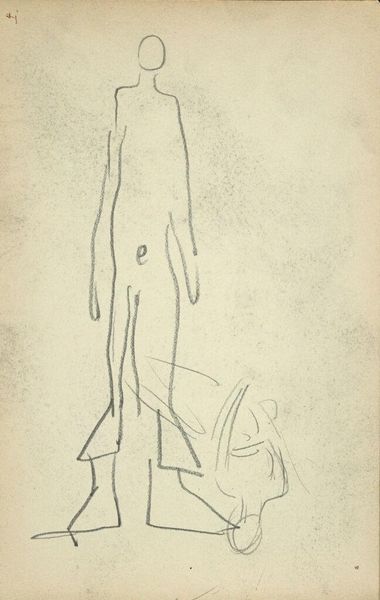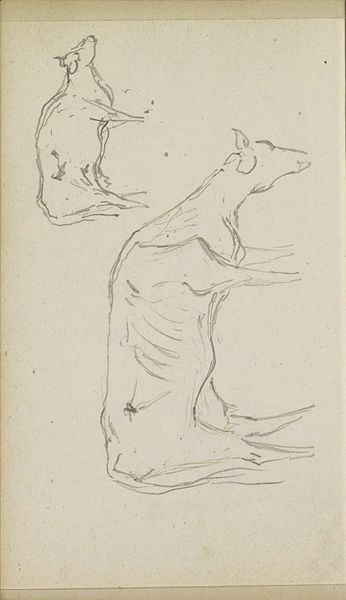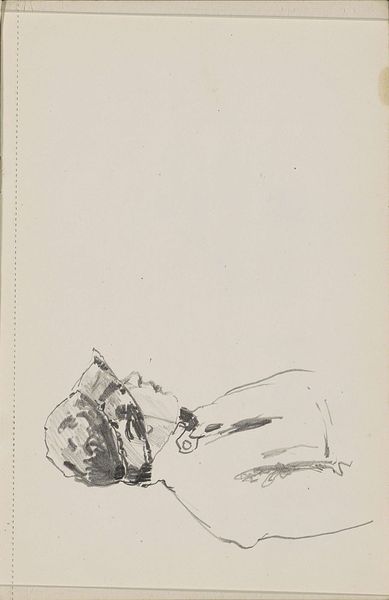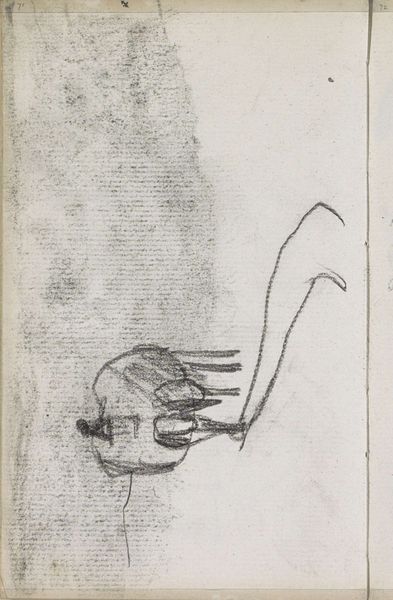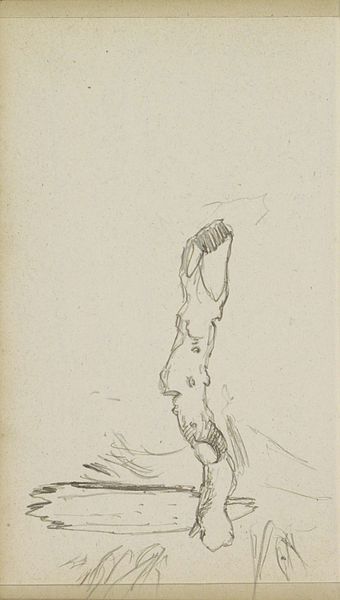
drawing, pencil, graphite
#
portrait
#
drawing
#
pen sketch
#
figuration
#
pencil
#
graphite
#
sketchbook drawing
#
modernism
Copyright: Rijks Museum: Open Domain
Curator: This small graphite and pencil sketch, “Staande man in een enkellange overjas,” or “Standing Man in an Ankle-Length Overcoat,” comes to us from the hand of Cornelis Vreedenburgh around 1935 or '36. I always imagine him capturing this figure amidst a bustling street scene. Editor: It's charming. The looseness of the sketch conveys a kind of hesitant energy, don't you think? As if the man is paused mid-stride, considering his next move or just caught in a fleeting thought. The minimal detail gives it such an evocative quality. Curator: It's a really interesting insight. Given Vreedenburgh’s oeuvre, largely devoted to serene landscapes, this sketch suggests a grappling with urban life. The '30s in Europe were tense – maybe this anonymous figure, swallowed by his overcoat, reflects some of that anxiety? Editor: Perhaps, though it feels very intimate. I find myself drawn to the man’s posture – slightly hunched, hands almost hidden in the coat’s pockets. There's a vulnerability in the rendering, wouldn’t you agree? Even the way Vreedenburgh uses shadow adds depth not only to the form, but to a psychological space. Curator: I agree. Look how the artist suggests the texture of the coat with just a few swift lines. The sketch feels modern not just because of its era, but for its impressionistic spirit – the figure almost dissolving into the background. It speaks volumes about how artists began viewing the individual's place within modern society. Editor: It’s that ability to evoke so much with so little that makes sketches so alluring. They give us access to the artist’s raw observation, the seed of an idea before it blossoms into something more grandiose. It's a glimpse into a creative process. Curator: Absolutely. I think this seemingly simple work actually reveals so much about both Vreedenburgh's broader artistic preoccupations, but also this specific historical moment and artistic techniques in the history. Editor: Right. It shows that art, no matter the scale, captures human emotion. Curator: Precisely. That's something to always remember about art!
Comments
No comments
Be the first to comment and join the conversation on the ultimate creative platform.
